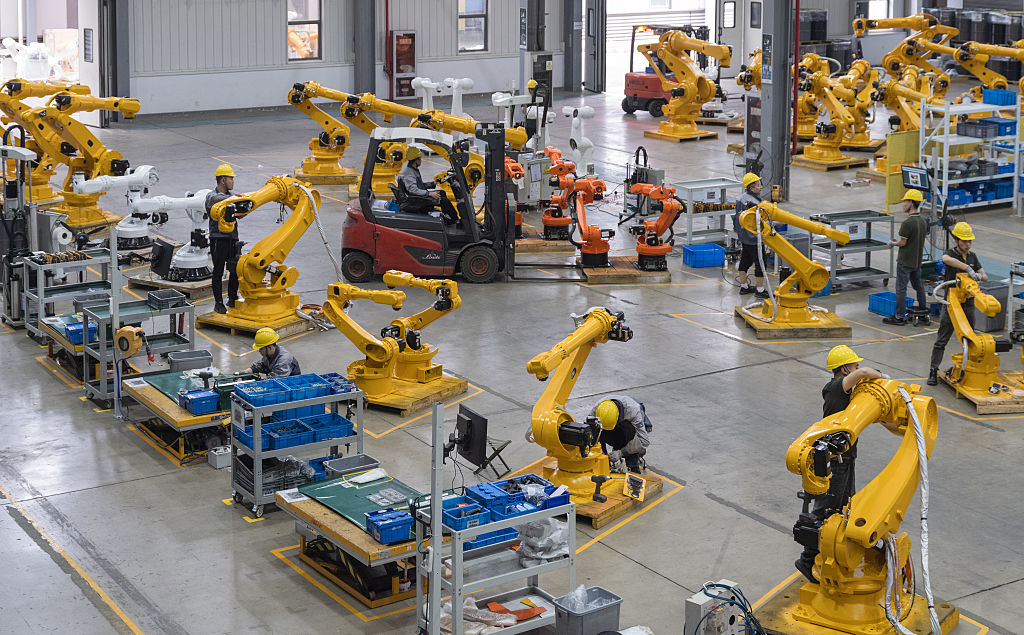
Announcing his tariffs in the White House Rose Garden last week, President Trump said the move would help reopen shuttered car factories in Michigan and bring various other jobs back to the U.S.
“The president wants to increase manufacturing jobs here in the United States of America,” Press Secretary Karoline Leavitt added on Tuesday. “He wants them to come back home.”
But rather than enticing companies to create new jobs in the U.S., economists say, the new tariffs—bolstered by recent advancements in artificial intelligence and robotics—could instead increase incentives for companies to automate human labor entirely.
Advertisement
“There’s no reason whatsoever to believe that this is going to bring back a lot of jobs,” says Carl Benedikt Frey, an economist and professor of AI & work at Oxford University. “Costs are higher in the United States. That means there’s an even stronger economic incentive to find ways of automating even more tasks.”
In other words: when labor costs are low—like they are in Vietnam—it’s usually not worth it for companies to invest in the expensive up-front costs of automating human labor. But if companies are forced to move their labor to more expensive countries, like the U.S., that cost-benefit calculation changes drastically.
To be sure, experts note that tariffs may not immediately lead to more automation. Automating manufacturing jobs often requires companies to make significant investments in physical machinery, which tariffs are likely to make more expensive. In a time of economic turmoil, companies also usually hold off on making big capital expenditures.
Thus, in the short run, Nobel Prize-winning economist Daron Acemoglu predicts, there is likely to be so much disruption that few companies will invest in automation or much else. But if tariffs persist in the medium term, Acemoglu tells TIME, he expects companies “will have no choice but to bring some of their supply chains back home—but they will do it via AI and robots.”
The evidence from the last time Trump imposed tariffs on trading partners, in 2018, shows no major increase in automation as a result. (Those tariffs did in fact lead to job losses in affected industries anyway, a Federal Reserve study found, due to higher production costs and reduced export competitiveness.)
But some economists think the 2025 tariffs could be different—incentivizing more automation—because AI and robotics have come a long way since 2018.
“Our technological capabilities have improved since the last round of tariffs, particularly because of improvements in AI,” says Frey, the Oxford economist.
The rise of robotics
For years, a major limitation of robots was that they couldn’t adapt to even minor changes in their environments. An industrial robot might be able to carry out a repeatable task in a controlled environment easily—like cutting a car door from a sheet of metal—but for more deft tasks in more complex environments, humans still prevailed.
That might not be the case for much longer. Robot “brains” are getting more adaptable, thanks to progress in general AI systems like large language models. Robot bodies are becoming more deft, thanks to investment and research by companies like Boston Dynamics. And robots are getting cheaper to produce over time (although tariffs might temporarily reverse that trend).
“It has taken some time, but people have been doing research on taking language models’ ability for common-sense understanding, and applying it to robotics,” says Lucas Hansen, co-founder of CivAI, a non-profit. “It doesn’t require much special effort to apply robots to new purposes now, especially once this technology matures a bit more. So if you’re a mid-sized manufacturing operation, previously you would have had to invest tons of money in R&D to automate everything. But now, it will require a lot less marginal effort.”
Acemoglu is more skeptical. Robots, he says, still struggle in complex environments, even if flashy corporate demo videos suggest otherwise. “I wouldn’t be optimistic that it’s a quick problem to be solved,” he says, predicting that flexible robots are at least 10 years away.
If tariffs lead to more automation, it’s still unlikely that productivity gains will offset the huge losses stemming from supply chain disruption and added import costs. “The main first-order effect of tariffs is they will make everything less efficient,” says Erik Brynjolfsson, the director of the Digital Economy Lab at Stanford University. “When you throw sand in the gears of supply chains and global trade, we’re all just going to be a little bit poorer.”
The Trump Administration has said it wants AI to benefit American workers, rather than replace them. “We refuse to view AI as a purely disruptive technology that will inevitably automate away our labor force,” Vice President JD Vance said in February. “We believe and we will fight for policies that ensure that AI is going to make our workers more productive, and we expect that they will reap the rewards.”
But past experiences with new technologies in the workplace suggest that rosy vision is unlikely to come to pass, says Brian Merchant, a labor historian and author of Blood in the Machine. “Historically when there is a downturn, if there is an opportunity to automate, then companies will take it. That doesn’t necessarily mean that you’ll use fewer humans, but it does mean that employers have a chance to break through labor protections and gain more leverage.”
